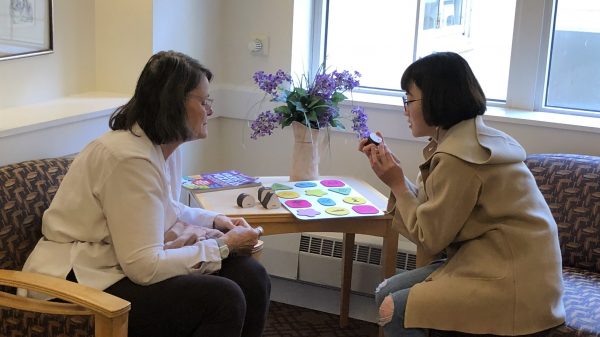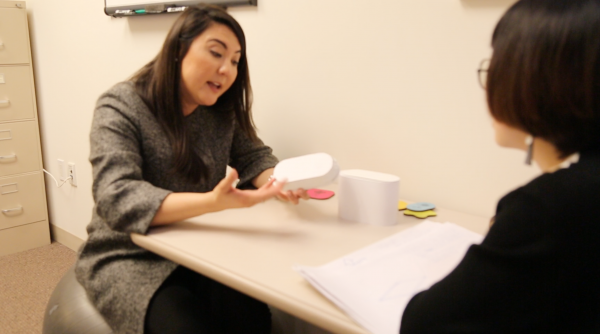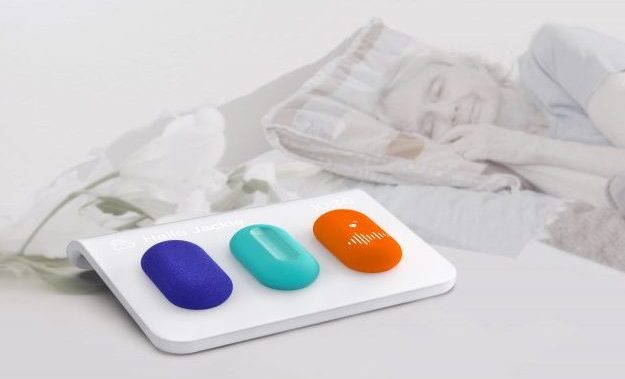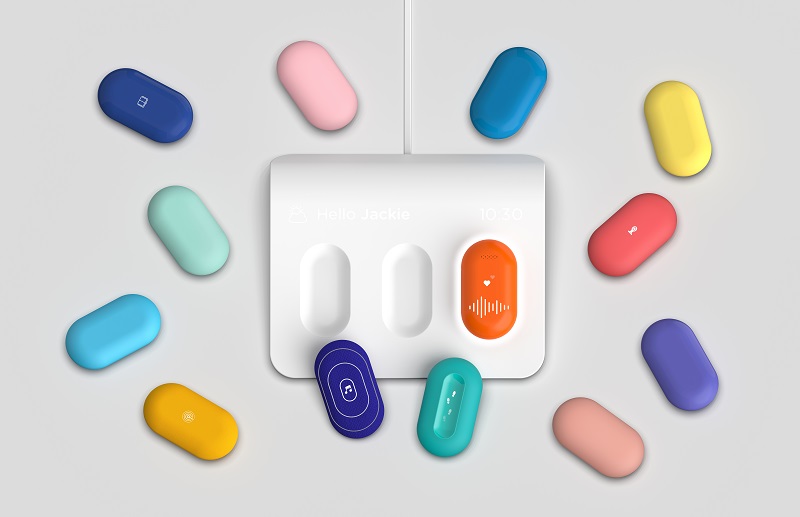A Drive to Help People with Dementia Leads Design Student to Inventive Thesis
How can innovative design improve the lives of people living with dementia? Industrial design student, Andi An, set out to explore this question with the help of Seniors At Home.
When Andi, a student at California College of the Arts, began work on her senior project, the Shanghai, China native knew she wanted to design something that could improve the lives of people experiencing Alzheimer’s and other forms of dementia.
Her focus on memory loss was a personal one. Andi’s great aunt is living with advanced dementia and can no longer remember family members including her sister, Andi’s 81-year-old grandmother. And when Andi learned that her grandmother was also becoming more forgetful recently, Andi wanted to find a way to help.
“I worry that my grandmother won’t remember me one day. I want to help her prepare for any changes in her memory so that she can stay connected to us.”
Design Research and Meeting Jackie
Designing a completely new tool for people with dementia is no simple task, so Andi’s professor encouraged her to spend time volunteering with someone who has dementia in order to learn about their needs and how best to help them.

Andi reached out Seniors At Home’s Center for Dementia Care. Andrea Korsunsky, Director of the Center for Dementia Care, knew immediately that this was a project that aligned with Seniors At Home’s mission to improve the lives of people living with dementia. By partnering with others who are developing innovative solutions to the challenges of aging, Seniors At Home is bringing new technologies to older adults and their families.
Andrea matched Andi as a volunteer with Jackie—a client who lives at the assisted living and memory care community, Rhoda Goldman Plaza.
Andrea says, “Like all of us, it’s important for people with dementia to feel a sense of purpose in their day-to-day lives. I knew it would mean a lot to Jackie to be a part of Andi’s important research project.”
The pair began to visit every week—walking, talking, and exploring Jackie’s neighborhood. “Everyone in the area knows Jackie because she stops to say hello to all the dogs,” Andi says.
Over the course of eight months, Andi began to notice the ways in which Jackie perceived the world differently than others who don’t have dementia.
Andi says, “She notices tiny details, all the different flowers and the small things around her. She takes time to appreciate all of them.”
The Design Process

Andi gained deeper insight into some of the obstacles that Jackie faces due to her memory loss, and decided to focus her design on helping to alleviate some of those challenges. Together with Andrea, she identified some key challenges for people with dementia that she wanted to address.

To address these challenges, Andi began by designing three initial models, which she brought to Jackie and Andrea. Jackie thoroughly reviewed each one and gave Andi feedback on the elements that were either helpful or confusing to her, while Andrea reviewed the models from her clinical perspective.
Andrea says, “Too often, designers who want to make products to help people with dementia don’t incorporate enough research into the products they create. Direct experience with those living with the condition is critical for developing truly helpful tools and I think Andi’s project does that very well.”
Introducing: ‘grace’
With Jackie’s input, Andi refined her project to one design—the prototype of a product she calls ‘grace.’
Grace consists of a central hub with space for three oval-shaped “modules” that a person with dementia can hold in their hand. The modules are made out of three different materials—one is fabric, one is silicon, the last is plastic—to provide an engaging tactile experience for the user.

Each module is programmable by a mobile app so that family members can customize them to their loved one with dementia’s individual needs. Families can choose between three categories for each module—cognition (stimulating thinking abilities), movement (maintaining physical mobility), and emotion (enhancing family connection).
The three modules in Andi’s prototype are tailored to Jackie:
- The first module provides stimulation through music. Music playlists, which can be programmed by Jackie’s family members in the grace app, are fully individualized. When picked up, the music plays – shaking the module makes music play.
- The second tool addresses movement. It counts steps, gives directions, and encourages Jackie to walk. It also informs her family members what she did today or where she went.
- To help Jackie stay connected to her loved ones, the last module allows family members to schedule voice messages and reminders throughout the day. They can record statements such as ‘I love you’ or ‘It’s time to take your medication.”

What makes Grace different from any of the other devices that are out there? Andrea says, “Grace is designed to be very dementia-friendly. It helps highlight the importance of a playful and structured environment for a person with memory loss.”
When Andi showed Jackie the final design, Jackie was thrilled and hoped that Andi would turn this prototype into an available product one day. “Jackie asked me, ‘Can I be the first person to have one of these?’” Andi recalls.
“I said ‘Yes, of course you can!’”
The Presentation
This month, Andi will present her senior thesis and design to the public. Over 400 people including several design companies will be there, but Andi is most looking forward to seeing her grandmother, who is making the trip all the way from China to be there.
Andi graduates this summer and hopes to start her industrial design career here in the Bay Area. Her experience working with Jackie and Andrea is one she’ll never forget. She says, “I have so much more insight into dementia now, and that has really helped the way I look at product design.”
The partnership between Andi, Jackie, and Seniors At Home brought artistic talent, firsthand knowledge, and clinical experience together to create the design of something that could improve the lives of people living with Alzheimer’s or dementia.
Andrea says, “Andi’s work is shaping the future of dementia care. It’s a perfect example of why we need to invest in and educate the next generation on this topic.”
And Andi and Jackie? Andi plans to continue visiting with Jackie for more walks, conversation and connection.
Learn more about Seniors At Home’s Center for Dementia Care >
To request a dementia care consultation for your family, call us at 415.449.3700 or contact us online.